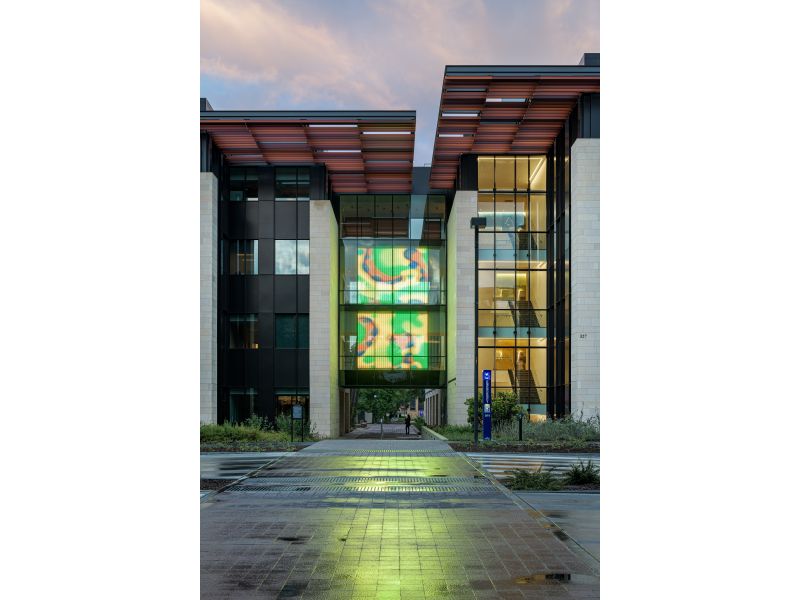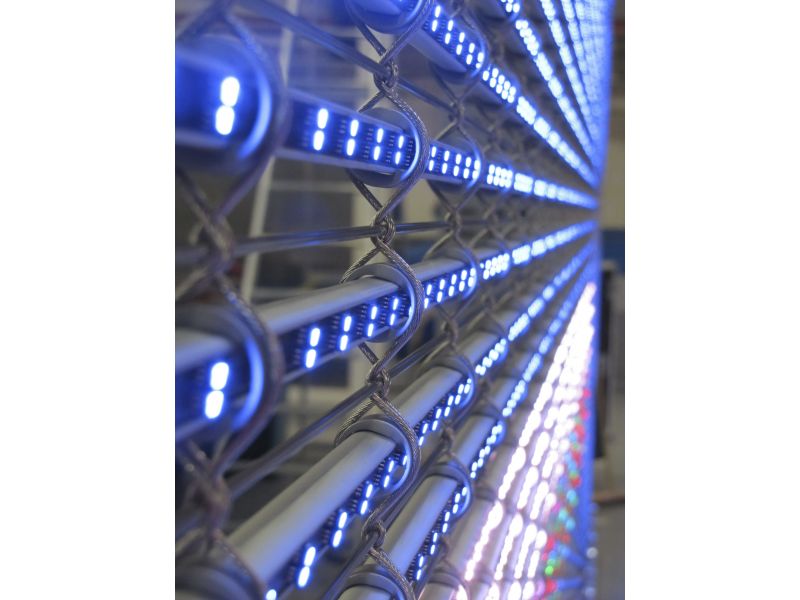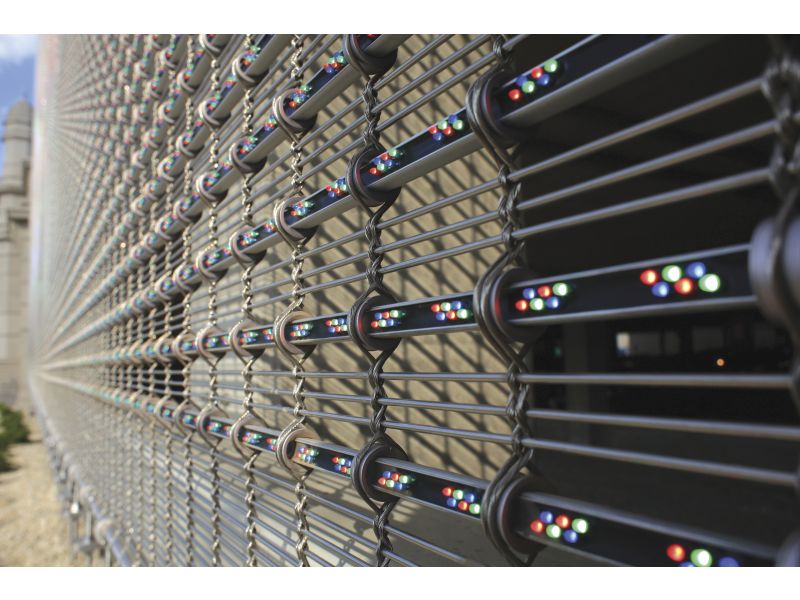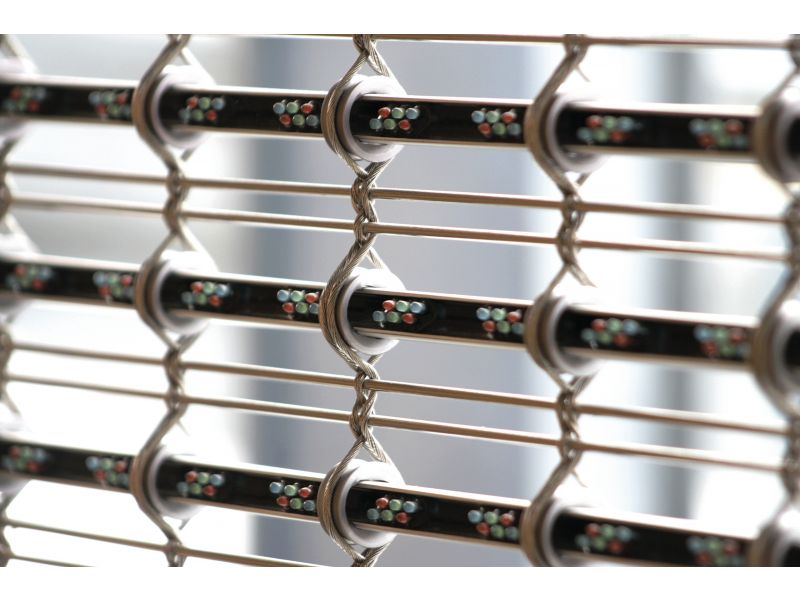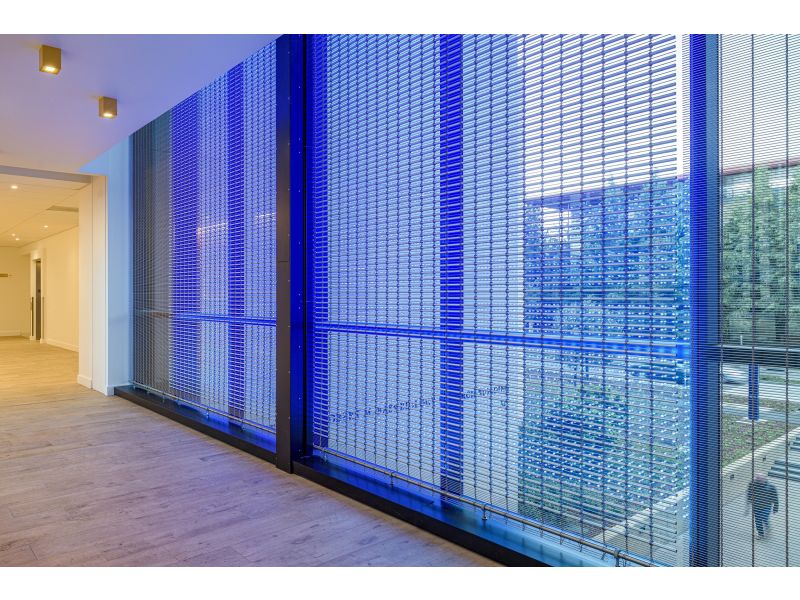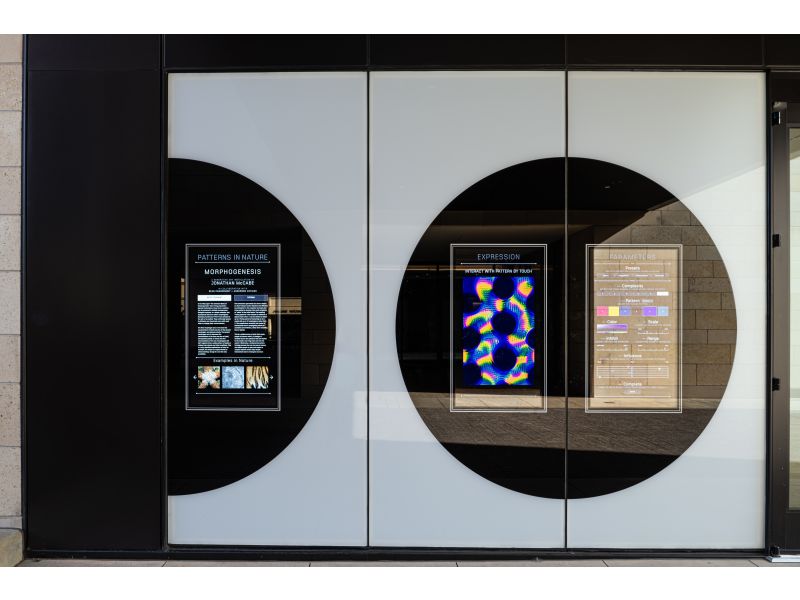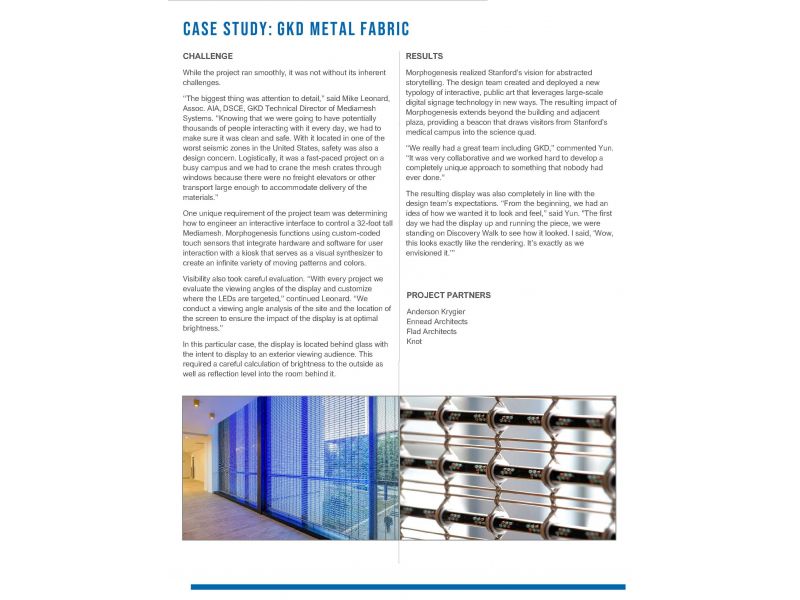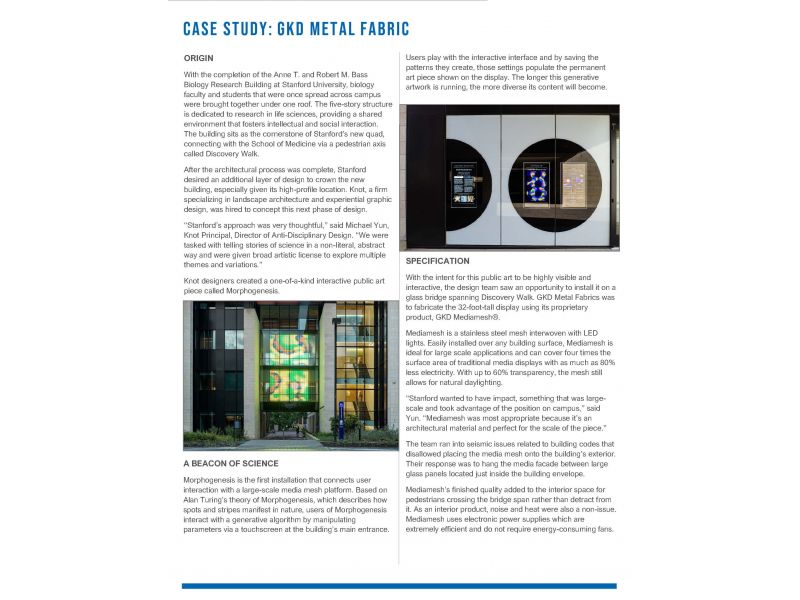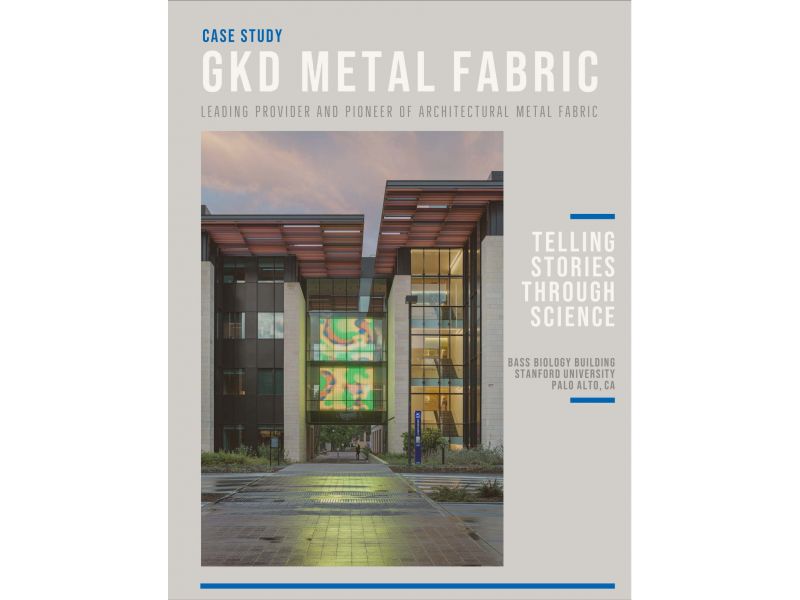
Sustainability
See Description
Awards
None
Pricing
N/A
Notes
PROJECT PARTNERS Anderson Krygier Ennead Architects Flad Architects Knot
In 1925, a group of innovative German engineers created what would later become the most advanced technical weaving mill of metal fabrics for filtration and industrial use. As the company grew, the world’s most functional and visually engaging material architects and designers would ever have the opportunity to specify evolved -- metal fabric. To this day, GKD continues to revolutionize how architectural structures are enhanced aesthetically, augmented functionally and optimized economically.
Our industry expertise and involvement extends to the many associations and groups we serve.
Sustainability
At GKD, we are committed to the environment and good stewardship. Our sustainability efforts our evident in that the stainless steel we use contains post-industrial and post-consumer content; our metal fabrics can be re-used; and metal fabric contributes to LEED points under the Energy and Atmosphere, Material and Resources, Indoor Environmental Quality, Innovation and Design and Site Selection categories.
Manufacturing
GKD Metal Fabrics is headquartered in Cambridge, Maryland, USA, in an award-winning structure designed by renowned French architect Dominique Perrault and Baltimore-based Ziger / Snead Architects. The building functions as both center of operations and manufacturing facility while showcasing a host of GKD metal fabric innovations. Our second facility lies directly across the street and houses our filtration and process conveying business units. We are an ISO certified facility.

ISO 9001 : Certificate registration no. 311312 QM08
Sales
GKDMETALFABRICS. maintains a team of technical consultants here at our Maryland headquarters. This team is supported by a nationwide network of professional representative organizations. click here
Service
Installation, warranty and maintenance services are ongoing. We service North America from our Maryland facility. We are available at all times to respond to service needs. We additionally employ services metal working and trades craftsmen throughout the USA.
Cambridge MD 21613
United States
(800) 453-8616
https://www.gkdmetalfabrics.com/
